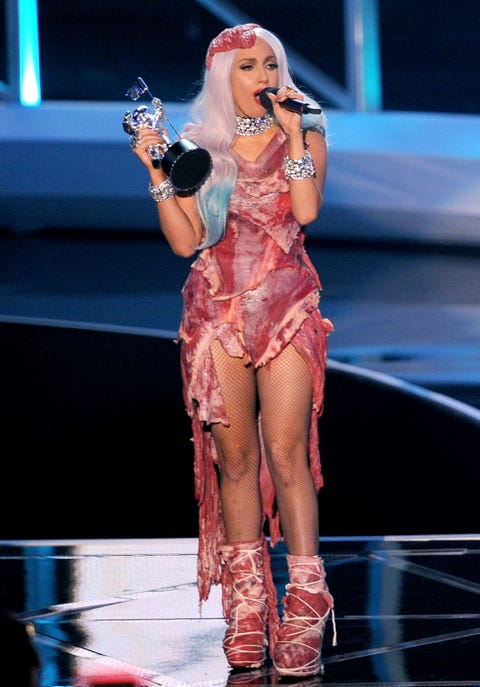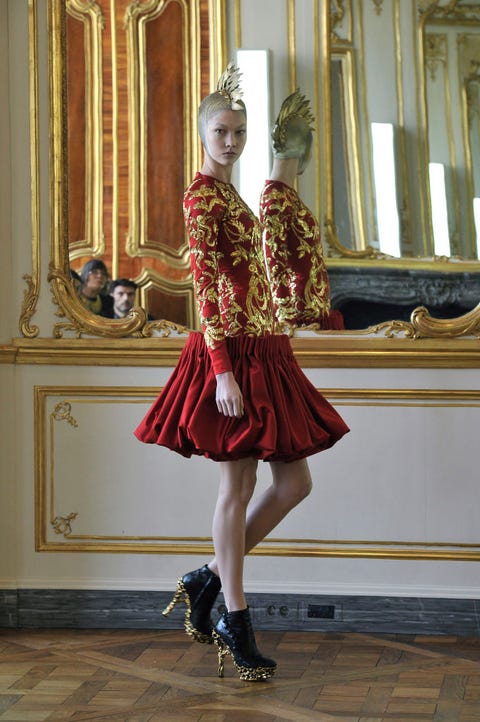Twenty-ten was a big year: Justin Bieber’s meteoric ascent to fame sparked both an army of Beliebers and hideous copycat side-swept bowl cuts, Ke$ha (before she dropped the $) topped Billboard’s Hot 100 chart with her hit “TiK ToK” (before the TikTok app ever existed), Sandra Bullock won an abundance of awards for her performance in The Blind Side, Prince William and Kate Middleton announced their engagement to worldwide fanfare, Lady Gaga wore a meat dress to the MTV Video Music Awards, Apple released the iPad, and for some reason, the entire nation was obsessed with zombies.
But for a lot of people, the majority of Americans, probably 2010 was simply two years after the Great Recession. There were alarmingly high unemployment rates, a flood of foreclosures (the result of the housing bubble burst), and failed attempts to pick the country up from the ruins of a devastating financial crisis. The harsh reality of it, despite a decade’s worth of time to heal wounds and blur the sharp edges of turmoil and tension - 2010 wasn’t all that great.
So what did that mean for fashion? Well, on a macro level, the economy, naturally, impacted with the way in which consumers shopped. That meant a spike in sales for fast-fashion retailers. Forever 21, Zara, and H&M raked in profit and, in turn, opened more doors. And later that year, when H&M partnered up with Lanvin, the romantic luxury French brand that was made desirable with Alber Elbaz at the helm, it created a level of hysteria that remains unmatched to this day. Perhaps it was the designer-for-less concept or the brand-name recognition or the combination of both, but either way its success served as the blueprint for forthcoming designer collaborations with fast-fashion retailers.

On the runways, though, it was business as usual, except for one major event. The industry was hit with a tragedy, one that shook it to its very core, at the news that 40-year-old Alexander McQueen, one of the greatest of the greats, was found dead by suicide in his London home on February 11th. A month later, for his Fall/Winter 2010 show in Paris, his team put together an exquisite medieval-inspired 16-look collection that was reportedly 80 percent done at the time of his passing.
"He wanted to get back to the handcraft he loved, and the things that are being lost in the making of fashion," Sarah Burton, McQueen’s successor, had said about the collection. "He was looking at the art of the Dark Ages, but finding light and beauty in it. He was coming in every day, draping and cutting pieces on the stand."
At his memorial in September, musicians, celebrities, and designers (including Kate Moss, Naomi Campbell, Sarah Jessica Parker, Stella McCartney, Bjork, and more) mourned the loss of a true genius, an artist unlike any other.
McQueen’s shows were performative, they brought his creations to life in a remarkable, avant-garde way. And such great showmanship was also seen elsewhere in 2010, like Karl Lagerfeld’s Fall/Winter 2010 show for Chanel, in which models paraded around a melting 28-foot, 265-ton iceberg from Sweden (it took six days for a team of 35 sculptors to carve it) as a commentary on global warming. The luxury French house’s Spring/Summer 2011 show was equally as memorable: a backdrop of a sprawling monochrome garden, complete with an 80-piece orchestra. Similarly, John Galliano was taken by flowers for his Dior Fall 2010 Couture show, tapping British set designer Michael Howells to create these larger-than-life parrot tulips, a theme that percolated throughout the collection.

These elaborate sets appeared stateside as well, though never quite as extravagant as their European counterparts. For Fall/Winter 2010, a three-story scaffold was built for the Moncler Grenoble presentation. The same season, at the start of his show, Marc Jacobs and Robert Duffy, then the president of the Marc Jacobs brand, were seen tearing brown construction paper from a wooden structure, which revealed the entire 56-model cast posing on a platform. And for Spring/Summer 2011, the designer installed a colossal copper cylinder right in the center of the runway. Both instances are examples of Jacobs’ penchant for grandiosity, which was in conjunction with his over-the-top Louis Vuitton productions as its women’s creative director, until his departure in 2013, that is (now, not only are his shows famously on time, as opposed to the two-plus hour delays, but he’s also scaled back his sets to a considerable degree).
But for many designers, who also, by the way, were not immune to the recession - a frills-free run-of-the-mill show was the status quo. And that became even more apparent when New York Fashion Week (or Mercedes-Benz Fashion Week, as it was known then, when the luxury car brand was the title sponsor of the event until 2015) outgrew its Bryant Park home and the tents were moved to a bigger location at Lincoln Center in 2010, signaling the end of an era and the beginning of a fashion week that would continue to become more centralized, more factory-like, and more generic as a result. (Although its roots go back to 1943, NYFW didn't technically start until 1993 with 35 shows, a number that ballooned to 70 by the end of 2009.)
And perhaps there is no greater sign of the times than the front row at NYFW shows in 2010, where among the A-list stars (Julianne Moore, Catherine Zeta-Jones, Jennifer Lopez, and Natalie Portman), there were also Gossip Girl actors and pop stars, like Chace Crawford, Leighton Meester, and Ashlee Simpson.

But that would be in the years to come. In 2010, the year that immediately followed the aughts, a decade established by excess and hyper-sexuality, a decade in which bandage dresses and disturbingly low-rise denim were not only the norm, but acceptable garments to wear out in public, the pendulum swung back to stark minimalism. Modesty. And the pioneer of that look was Phoebe Philo, who made her Spring/Summer 2010 debut at Celine with a new, empowering definition of femininity.
Considered one of the most important, most impactful collections of the decade, Philo’s collection, which comprised streamlined, defiantly pared-back pieces rooted in sensible utilitarianism, resonated with the working women, who were confronted with a bleak present, done at the hands of men, and offered them a beacon of hope, a sense of optimism, and a reflection of their own strength.



![MAFAVUKE MONDLANE - XINOFOBIA [PROD: CKOTTA BOY] (2021)](https://blogger.googleusercontent.com/img/b/R29vZ2xl/AVvXsEgJTc2c2PL2JRLKlpFEgxnF77K4ANc-PxfHtl3KQz0AJ38EN-DqhZtjh_7SDz6SZWRn_fesUsXq07g3UBrCCEtCMlDQPv6aQN-QqGZXbop50OldZghkkAG-XM70I0XIpgSq1zHJQZ3tnUA/w100/20210126_162628.png)


0 Yorumlar